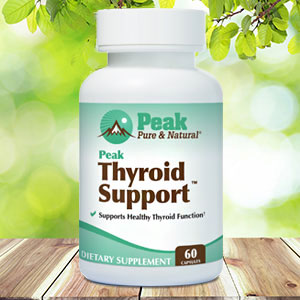Get Easy Health Digest™ in your inbox and don’t miss a thing when you subscribe today. Plus, get the free bonus report, Mother Nature’s Tips, Tricks and Remedies for Cholesterol, Blood Pressure & Blood Sugar as my way of saying welcome to the community!
The worrisome link between thyroid eye disease and sleep apnea

Snoring. Waking up multiple times a night gasping for air. Feeling tired and irritable throughout day. All of these are signs you could have sleep apnea, a condition that affects more than 29 million Americans and carries very serious health risks. But if you have thyroid eye disease, sleep apnea may even steal your sight…
With obstructive sleep apnea (OSA), the most common form, you may stop breathing for minutes at a time, up to a hundred times a night!
This condition is a proven risk factor for stroke and heart disease, Alzheimer’s disease, and even some forms of cancer. It even has been linked to the chances of a severe COVID-19 infection.
Now, we can add another disease to that list, one that, at first glance, may not seem to have much relation to snoring and breathing…
How sleep apnea can lead to blindness
In 2019, researchers at Columbia University published a preliminary study showing a link between obstructive sleep apnea and more severe outcomes in persons with thyroid eye disease (TED).
Just like rheumatoid arthritis, heart disease and diabetes, sleep apnea causes an increased risk of a cytokine storm, an extreme inflammatory reaction that puts stress on the heart and lungs, and affects other organs, including the eyes.
Specifically, the study found a link between OSA and compressive optic neuropathy, or compression of the optic nerve, leading to blindness.
In 2020, a larger group of researchers, including two from the earlier study, confirmed this link.
High or low risk, the damage is the same
While the 2019 study looked only at people with high risk for sleep apnea, the 2020 study included people at lower risk, to compare and see if the effect on the eyes was similar.
“With an examination of the full spectrum of disease severity… we showed that the risk for sleep apnea was associated with the worse forms of thyroid eye diseases,” said Dr. Michael Kazim of Columbia University Medical Center.
The findings have changed Dr. Kazim’s practice. “I screen all of my patients with thyroid eye disease for sleep apnea,” he says. “If they score in the high-risk group, then they’re referred for formal sleep testing, which now can be done with an at-home test.”
Dr. Kazim and his colleagues are also planning a prospective study of TED patients with confirmed sleep apnea to see whether treating the airway condition can improve the eye disorder. Dr. Kazim says he’s optimistic about the outcome.
“I have every reason to believe” that treating sleep apnea will ease TED symptoms,” he says.
Dr. Kazim also notes that, if controlling sleep apnea does indeed lead to improvements in TED, then it would be just one of two risk factors for the eye disease that we actually have control over, smoking being the other one.
Other risk factors for TED
There are other risk factors for TED to be aware of, including:
- Age. TED usually affects middle-aged adults (but can occur at any age).
- Gender. Women are affected more than men.
- Family history of thyroid eye disease
- Smoking: Smoking increases the risk of thyroid eye disease by 7–8 times, causes thyroid eye disease to have a longer “active phase”, and reduces the effectiveness of treatments.
- Radioactive iodine therapy: Radioactive iodine is often used to treat hyperthyroidism and Graves’ disease. This treatment should be used with caution in people with active thyroid eye disease, as it could worsen the condition.
- Low blood levels of selenium are a risk factor for TED.
The bottom line is that if you have TED and sleep apnea, you are at higher risk of losing your vision. So do everything in your power to manage both.
That may include losing weight (if you’re overweight), sleeping on your side instead of your back and doing anti-apnea exercises. Check out his post on the subject for more information. You could also try wearing a chin strap while you sleep.
Of course, right now, the only surefire way to relieve a severe case of sleep apnea is using a continuous positive airway pressure (CPAP) machine. If you can stand it, you should give it a shot… especially since sleep apnea can take such a serious toll on your health.
Sources:
Sleep apnea linked to severe thyroid eye disease — medpagetoday.com
Prospective Correlation of Risk of Obstructive Sleep Apnea With Severe Clinical Features of Thyroid Eye Disease — Ophthalmic Plastic and Reconstructive Surgery
Association of Risk of Obstructive Sleep Apnea With Thyroid Eye Disease: Compressive Optic Neuropathy — Ophthalmic Plastic and Reconstructive Surgery
Thyroid eye disease risk factors — thyroideyes.com













